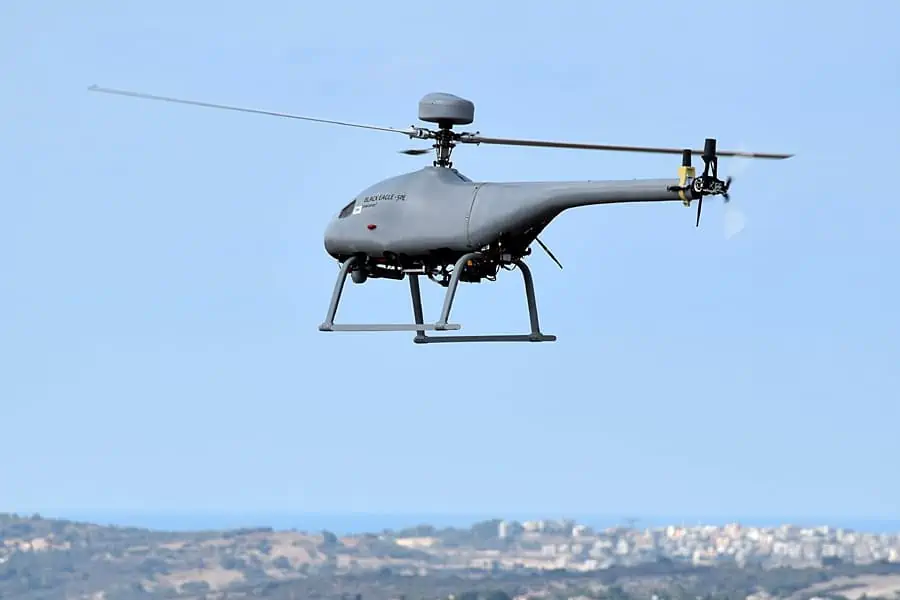

Steadicopter has unveiled the Black Eagle 50 Electric, a new rotary unmanned aerial system (RUAS) powered by electric motors and designed for a wide range of law enforcement, maritime, civilian and tactical missions.
The electrically-powered unmanned helicopter features a maximum take-off weight of 50 kg and useful load weight (payload and batteries) of 30 kg, and is capable of up to two hours of flight time. This enables high performance and maximum operational flexibility for both security forces and civilian applications, such as search and rescue, cyber, intelligence, offshore rigs, and high-end naval missions.
The electrically-powered engine has significantly reduced the weight of the air vehicle, enabling additional, much required, payload capacity for a variety of missions. With an empty weight of only 20 kg as a platform, the Black Eagle 50 Electric has the capacity to carry additional batteries for longer flights, heavier payloads, and more.
Powered by dual-electric propulsion, the Black Eagle 50 Electric is simple to operate, easy to maintain and, with no need for fuel storage, both environmentally friendly and safe. It has all the proven capabilities of the gasoline-powered Black Eagle 50, including vertical take-off and landing capability, long hover durations, and leading mission sensor suites for all mission scenarios, whether day or night. Additionally, like the other platforms in the Black Eagle family, it is extremely adaptive to high-altitude flights, making it deployable in many high-altitude operational scenarios.
Noam Lidor, Sales & Marketing Director at Steadicopter, commented: “The Black Eagle 50 Electric has been developed in response to the need of the company’s customers worldwide for an electric VTOL aircraft, which can still be used in many varied missions, both in terms of being able to carry advanced payloads, and through extended time in the air. This is a truly multi-domain, multi-mission and multi-sensor system, coupled with all the benefits of a covert, easy-to-maintain, highly-versatile electrically-powered system.”


















